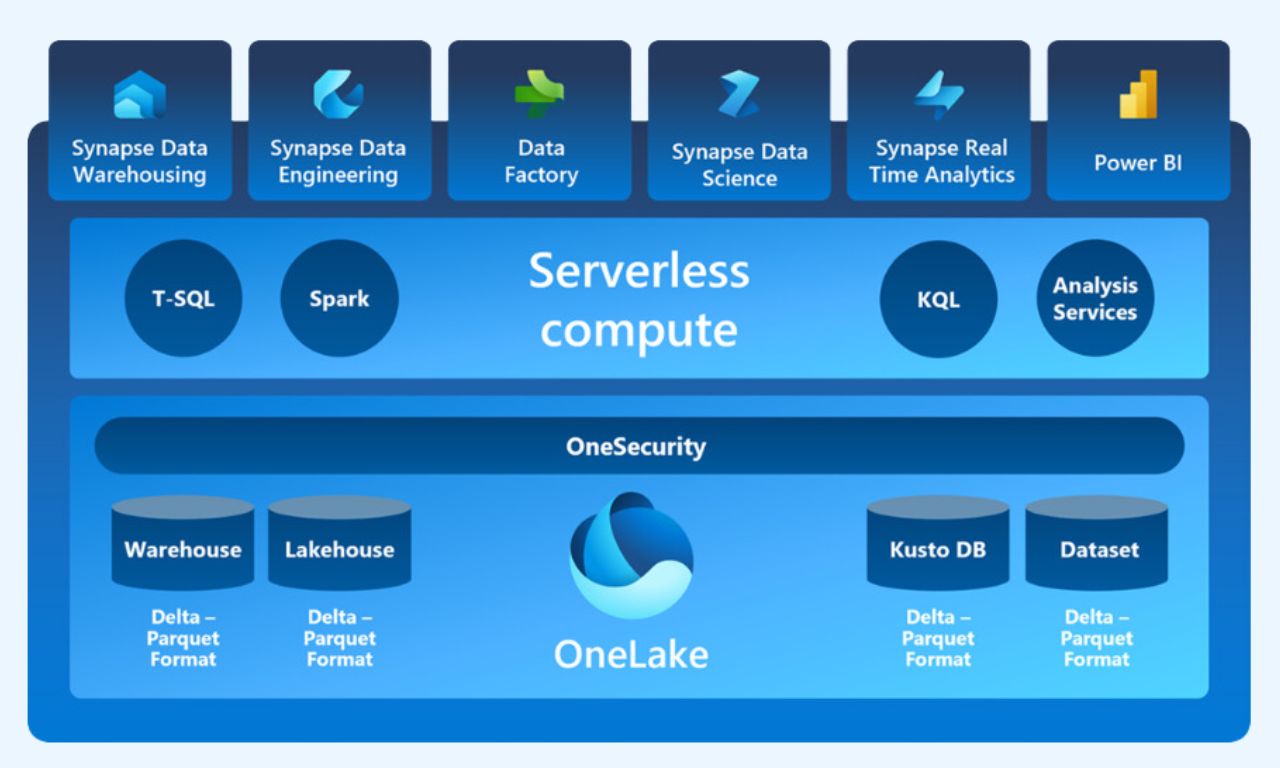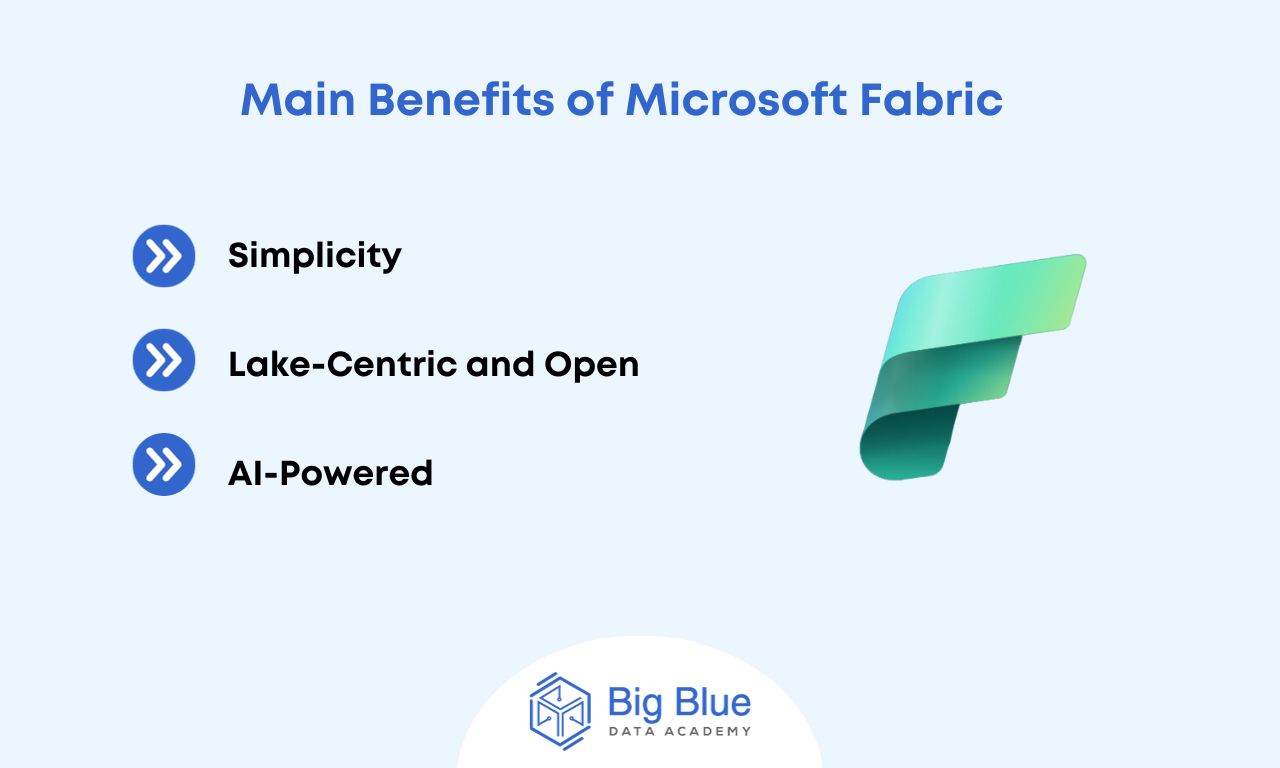What is Microsoft Fabric and How Does it Work?
In our previous articles, we discussed various data analysis tools that significantly facilitate the work of data analysts and data scientists.
An all-in-one data analysis platform that handles everything is Microsoft Fabric, increasing productivity and performance for those who use it.
In today's article, we will explore:
- What is Microsoft Fabric
- Its key features
- The advantages it offers
Let's start with a basic definition.
What is Microsoft Fabric and How Does it Work?
Microsoft Fabric is an all-in-one data analysis platform based on the cloud, supported by AI, covering the entire spectrum of data science.
It was released in May 2023 in free preview mode and handles data and analytics in real-time.
It provides a comprehensive suite of services, including data lakes, data integration, data engineering, and business intelligence (BI).
The way it operates is simple.
Microsoft Fabric consolidates new and existing elements from Power BI, Azure Synapse, and Azure Data Factory into a unified environment.
Then, all these elements are presented in customized experiences for each user:
- Synapse Data Warehouse for managing large quantities of relational data.
- Synapse Data Engineering for creating high-performance and scalable big data pipelines.
- Data Factory for creating and scheduling data integration workflows at scale.
- Synapse Data Science for a collaborative environment in creating, training, and deploying machine learning models.
- Power BI for business intelligence capabilities in a user-friendly workspace.
- Synapse Real-Time Analytics, allowing real-time data analysis solutions using Apache Spark and Apache Kafka.

As a cohesive solution for both businesses and data professionals, Microsoft Fabric significantly simplifies data analysis workloads and facilitates effective decision-making based on data.
Now that we've covered some basics about Microsoft Fabric and how it operates, let's look at the advantages it offers.
Advantages of Microsoft Fabric
Microsoft Fabric provides many advantages through its usage.
Here are some of the most significant:

Advantage #1: Simplicity
Integrating various products from different providers can be a challenging and costly process.
Microsoft Fabric offers data teams a unified solution designed for simplicity.
With Microsoft Fabric, all data and services seamlessly integrate, and IT teams can centrally configure core corporate capabilities, automatically applying permissions to all underlying services.
Advantage #2: Lake-Centric and Open
Modern data lakes are often unstable and complex, making their construction, integration, and management challenging.
Also, once operational, they can cause significant data duplication, and vendor lock-in concerns.
This can result from using multiple data products that use different proprietary data formats in the same data lake.
Microsoft Fabric provides the solution to this problem, thanks to OneLake, an integrated software as a service (SaaS) and is a multi-cloud data lake.
OneLake helps eliminate diffuse and disorganized data silos that result when data team members configure their own separate storage accounts.
OneLake offers the entire team a unified storage system where data sharing is easy using centrally enforced policy and security settings, as we mentioned earlier.
Advantage #3: AI-Powered
Azure's OpenAI service is integrated into Microsoft Fabric at every level to help users uncover the full potential of their data and discover meaningful insights.
Users can also use conversational language to create data flows, code, machine learning models, or visualize results, thanks to the integration of Copilot into Microsoft Fabric.
Ramping Up
In-depth insights into Microsoft Fabric, its functionality, and its key advantages demonstrate its usefulness for anyone involved in the field of data science.
It combines simplicity and data security with features like data storage and migration, making it a valuable platform for the vital areas of data science and artificial intelligence crucial for numerous companies to stand out in the competitive landscape.
If you are intrigued and want to learn more about data science in general follow us for more educational articles!


.jpg)